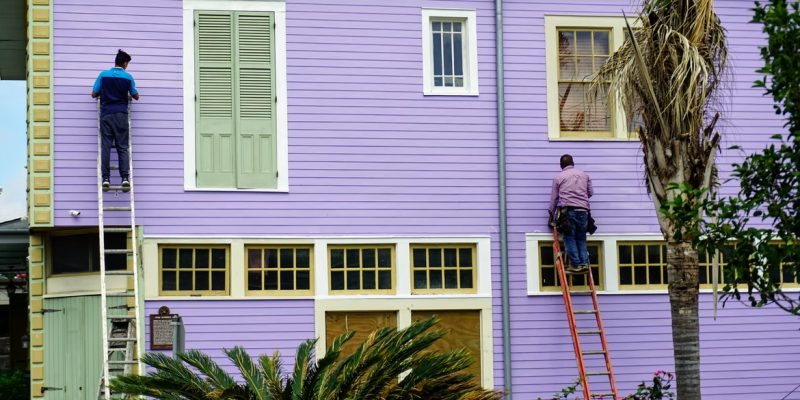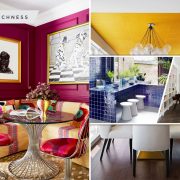You may have considered starting a home improvement project to remodel your house. While you are at it, you should also consider some changes that will protect your house and secure your investment.
The first thing you must consider is the siding on the exterior of your home. Why? Because there are different kinds with different pros and cons.
In this guide, we’ll take you through the importance of having the right siding to protect your house and make it look its best. Stay with us!
Siding for Your Home
Siding has many advantages other than adding aesthetics to your home’s exterior. It is also great for maximizing natural lighting and allowing additional airflow, as well as ensuring safety.
Let’s talk about the importance of having the right type of siding. Besides its aesthetic value, siding also protects your property.
The best thing about siding is that if properly installed and maintained, it will last for decades. Now that’s value for money, isn’t it?
Having said that, not all siding is of the same quality, which is why you must contact knowledgeable siding contractors near you. They can show you the different options that are available for your climate and discuss the various materials they are made from.
So, how do you know which siding is the best choice for your house? That is exactly why we are here – to assist you with our expert advice on the different types of siding for homes, especially yours!
Different Types of Siding
Let’s discuss the different types of siding available to protect and beautify your home. There are several options to pick depending on your needs and budget.
1. Vinyl Siding
Vinyl siding is the most common and popular option. It dominates the market because it is easy to install, low maintenance, and relatively cost-effective at $3-8 per square foot.
However, it might not be the best choice if you are looking for durability. It is not as long-lasting as some other types of siding, although if the conditions are not too harsh and your area is not prone to natural disasters, it could last for decades.
Vinyl is available in both horizontal and vertical siding options. There are also wood shake styles in various colors, textures, and patterns. This variety provides multiple options for your home improvement needs.
2. Insulated Siding
The main feature of insulated siding is a protective layer that is made of EPS or expanded polystyrene foam.
The purpose of this layer is to trap air, helping to control the building’s temperature and increasing the energy efficiency by roughly 20%, which is the main selling point for this particular type.
It is also available in various colors, giving you many choices for your home’s exterior appearance.
In terms of durability, insulated siding is a good choice. It requires minimum repairs and replacements, an additional plus point for homeowners.
3. Natural Wood Siding
Wood siding is hands down the best option for most homeowners. There are many other materials that are often used to replicate a wood finish, but real wood is irreplaceable when it comes to siding. This is due to the natural texture and curb appeal of authentic wood.
If you compare the prices of wood-based siding with other options, you may find it costly. But there are definite advantages to opting for wood.
Wood siding allows you to paint or stain the exterior of your home easily. As far as drawbacks go, maintenance can be an issue, as it requires regular care. You may have to repaint the wood every five years or so.
4. Manufactured Wood Siding
Manufactured wood siding is a cheaper alternative to natural wood. This kind of engineered wood siding ages beautifully and can last a lifetime with proper care. It is less costly and will give you the same aesthetic as natural wood.
Coming to the disadvantages, manufactured wood is made from boards or cedar that absorbs moisture, which can result in mold and mildew issues. If you can prevent water from being absorbed into the panels, this siding option will serve you for decades.
5. Metal Siding
An excellent alternative to shingles is metal siding. Maintenance requirements are low, and it is known to be resistant to pests and fire. Metal siding is gaining popularity among residential homes for this reason.
It is completely recyclable and durable, making it an eco-friendly purchase. If you choose to install this kind of siding on your home, you won’t need to worry as much about pest infestations or mold growth.
Now coming to the downsides of metal siding. It is costly and prone to denting. It can also get rusty, especially if you reside in a coastal climate.
6. Fiber Cement-Based Siding
Siding made from fiber cement is the closest looking thing to natural wood in terms of appearance. It is also long-lasting, with an average life span of 50 years, which is quite impressive.
It can be very pricey if you use it for the entire exterior of your house.
Let’s talk about maintenance. It is easier to care for fiber cement siding than many other types of siding. It doesn’t decay easily and doesn’t attract insects. In other words, fiber cement siding is totally worth the investment!
7. Composite Material-Based Siding
Composite siding is one of the most modern types of siding. It is easily available and impressively durable. Although there are limitations on the color choices, the good thing is that you can paint it however you like.
It is solid and tough and comes with a warranty. The components commonly used to make this type of siding are polymer, resin, crushed concrete, and wood. It is definitely the most durable kind of siding on the market, second only to steel.
8. Brick Siding
Yet another siding option that offers a variety in colors, brick siding is known to be pricier than some of the other options, but then it depends on the size of your property.
The best thing about brick is that it is very easy to maintain and is long-lasting. It is also fire-resistant. Brick siding is popular for environmentally conscious homeowners as it is reusable.
Brick siding also changes the look of your house in a unique way.
Moving on to the cons, the mortar between the bricks can start to break down for a few reasons. This means that you may have to replace it from time to time, which can be an additional cost.
Conclusion
You have to find out if your sole purpose is to improve the exterior of your property or find the most durable or cost-effective option.
As we explained, some of these siding options are known for their functionality, while others are more aesthetically appealing or economical.
When choosing from the different types of siding for your house to protect and impress, keep in mind which will work best with the weather in your area. Best of luck!




















